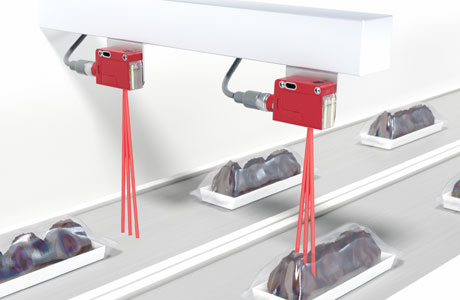Key Takeaway
Photoelectric sensors detect objects by using light. They have a transmitter that sends out a light beam and a receiver that detects the light. When something interrupts the beam, the sensor knows there’s an object. This simple method makes them useful in many industries, from packaging to manufacturing.
There are three main types: diffused, retro-reflective, and through-beam. Each type has its unique way of detecting objects, depending on the application. Diffused sensors detect objects directly, while through-beam sensors use two separate units for more precise detection.
How Photoelectric Sensors Work: A Basic Overview
At their core, photoelectric sensors detect the presence or absence of objects by using a beam of light. When the beam hits an object, the light gets reflected or interrupted, depending on the sensor type, and this change is what the sensor detects. Sounds simple, right? Well, the trick lies in understanding the different methods of operation.
The most common mode of operation is through-beam, where a transmitter emits a light beam to a receiver. If the beam is blocked, the sensor knows something is in the way. Another popular method is retro-reflective, where the sensor and reflector work together. The sensor sends light to the reflector, which bounces it back unless an object interrupts the beam. Understanding how these sensors function in different scenarios will give you the insight needed to choose the right sensor for the right task.

Key Components of a Photoelectric Sensor System
When you’re working with photoelectric sensors, understanding the key components is crucial. At the core of the system, you have the transmitter, which sends out the light signal, and the receiver, which picks up that light. Between these two, the signal processor analyzes the received signal and decides if the object is detected. The precision and reliability of these three elements can make or break the effectiveness of the sensor.
Some advanced photoelectric sensors come with filters to reduce noise or unwanted light interference, improving accuracy. Additionally, features like self-diagnostics can alert you to potential issues before they become major problems. These features ensure that the system works seamlessly, reducing downtime and ensuring smooth operations in industrial applications. Knowing how these components interact will help you keep everything running efficiently.
Main Types of Photoelectric Sensors and Their Functions
Photoelectric sensors come in three main types, each with its own strength: through-beam, retro-reflective, and diffuse. Through-beam sensors have the highest detection range, making them ideal for larger industrial spaces. Here, the transmitter and receiver are separated, allowing for long-range detection. On the other hand, retro-reflective sensors use a reflector instead of a separate receiver, simplifying installation and cutting down on setup time.
Diffuse sensors are different. They rely on the object itself to reflect the emitted light, making them perfect for short-range detection tasks. They’re typically used in applications where the object is close, and no additional hardware is required. Each sensor type fits a specific function, so knowing which to choose can significantly enhance performance and accuracy in your operations.
Common Applications of Photoelectric Sensors in Various Industries
Photoelectric sensors are widely used across industries due to their versatility. In manufacturing, they’re essential for detecting parts on an assembly line, ensuring each piece is in place before moving to the next stage. You’ll also find them in packaging, where they make sure that boxes are correctly sealed, or items are accurately counted. Their ability to quickly detect objects helps streamline operations.
In automotive plants, these sensors check the placement of car parts during assembly, improving accuracy. Similarly, in the food industry, they’re used to ensure the packaging process is flawless by identifying misaligned products or defects. The more familiar you get with these sensors, the easier it will be to optimize them for different tasks, saving time and improving efficiency in various industries.
Troubleshooting and Maintaining Photoelectric Sensors
Even though photoelectric sensors are low-maintenance, regular checks are necessary to prevent issues. One common problem is misalignment between the transmitter and receiver. If they’re not perfectly aligned, the sensor won’t function correctly. Keeping the sensor lens clean is another essential maintenance task. Dust or dirt on the lens can interfere with the signal, causing inaccurate readings.
Additionally, external light sources or reflections from shiny surfaces can mess with the sensor’s performance. In these cases, adjusting the sensor’s settings can help resolve the issue. Regular inspections to ensure alignment, clean lenses, and correct settings will go a long way in maintaining smooth operations. Doing so minimizes downtime and keeps the system running efficiently, giving you peace of mind in busy industrial environments.
Conclusion
Understanding photoelectric sensors and their functions is essential for any engineer in the industrial sector. From the different types to their applications and troubleshooting tips, getting a firm grasp on these fundamentals will set you up for success. Remember, these sensors are everywhere in industrial automation, and mastering them will not only make you more efficient but also more valuable in your role. Keep exploring, stay curious, and soon you’ll be the one teaching others about these critical components!
